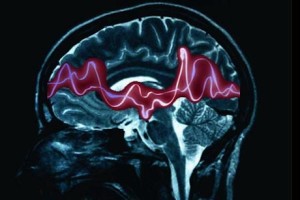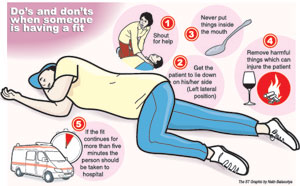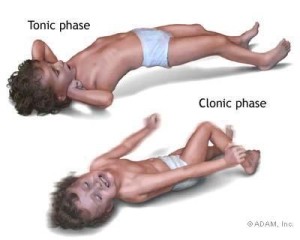A lot of Malaysians have misconceptions about epilepsy, and do not know what to do when they see a fitting person.
Myth 1 – You need to put a spoon or cloth to stop a fitting person from biting his/her tongue. You also need to restrain them so they cannot hurt themselves.
Do not do this – you may obstruct his/her airway and cause him/her to choke. You can cause more harm by doing so. Other than causing them to choke, you may end up injuring their gums, breaking their teeth or even their jaw! Do not restrain them. What you should do is to put a fitting person in the left lateral or recovery position. Cushion their head so that they do not injure their head on any hard surface. Remove dangerous objects like broken glasses or scissors away from them so that they could not accidentally hurt themselves while they were having a fit. If fits occurred by a busy roadside, in the water or any environment that can endanger them – you need to move him/her to a safer place.
Myth 2 – People with epilepsy are crazy, spiritually possessed, have bad blood or victims of black magic. No medication can cure them.
There is a lot of stigma associated with epilepsy and because of this misconception – many chose to suffer in silence and did not seek medical help. Epilepsy is a medical condition and not due to black magic or spiritual possession. Symptoms of seizures can be difficult to handle but can be controlled with medications. For certain patients with a type of focal epilepsy, they can even be cured with brain surgery.
Myth 3 – Epileptics or people suffering from epilepsy are stupid and disabled.
Epilepsy can occur as a single condition, or may accompany other conditions affecting the brain such as cerebral palsy, mental retardation, autism, Alzheimer’s, and traumatic brain injury. So yes – many epileptics are considered mentally and socially disabled because of their associated conditions. But not all of them are disabled. In fact, many have the same range of abilities and intelligence as the rest of us. Some may have severe seizures and because of that, they could not work. There are also others who have only occasional mild seizure or seizure-free under the control of medications, who managed to excel in their work.
Myth 4 – Epileptics cannot lead a normal life. They cannot work, cannot marry and have kids.
Epilepsy is a chronic medical problem just like diabetes and asthma. For many people, they can be successfully treated. For them, they can lead a normal seizure-free life.
Unfortunately, treatment does not work for everyone. Some still have occasional breakthrough seizures despite being on medications, while others suffered from side effects from their medications. These problems make life difficult for people living with epilepsy. They find it difficult to work and there are limitations over simple things normal people take for granted like driving, cycling or swimming.
Instead of ignoring their plight, what we can do is to support them at home, workplace and in public. Employers can help by providing jobs to people with epilepsy. Co-workers can help by learning first aid in case he/she develops seizure in his/her workplace. Family members can help them by driving them to school or work. Patients also need to be compliant, taking medications on time and avoid things that can precipitate their seizures.
Myth 5 – Seizures only occur in childhood.
Seizures brought by fever or also known as febrile seizures, are common in childhood. Many would no longer have seizures after they grow up but some ended up with seizures throughout their adulthood. The elderly and adults may develop seizures after a stroke, traumatic brain injury, brain tumour or infections to the brain. Adults can also develop alcohol or drug related seizures.
Myth 6 – Epilepsy does not harm you. It cannot kill you.
Epilepsy patients can develop into a prolonged seizure which is called status epilepticus. Status epilepticus is when a seizure lasts for more than 30 minutes or a multiple short runs of seizures lasting for 30 minutes or more, with little or no recovery of consciousness in between.
Any type of seizure can become status epilepticus. Status epilepticus is a medical emergency because the longer a seizure lasts; the more likely the brain can get damaged irreversibly. Without medical help, patient can die or suffer permanent brain injury.
Myth 7 – Epilepsy is contagious.
You cannot get ‘infected’ with seizures by living/working/playing with an epilepsy patient.
Women with epilepsy who wants to get pregnant need to be counseled by their doctors before they try to conceive. The rate of conception for an epileptic woman is 25% to 33% lesser than an average woman.
They can get pregnant provided their seizures are well controlled on the lowest possible drug dosage, preferably only on one type of anti epileptic medication. First, they need to be assessed by a neurologist and later closely monitored by both an obstetrician and neurologist from conception to birth. They must avoid certain medications like Topiramate (which could cause cleft palate in their new born child) during the first three months of pregnancy and be on the lowest possible dose of anti epileptic medication such as sodium valproate.
If you get pregnant while on anti epileptic drugs, you need to inform your doctor immediately. Do not stop your medication on your own. Get a doctor’s advice, preferably a neurologist. You would need an early detailed ultrasound scan to identify any congenital abnormality in the unborn child. If you stop your medications against the doctor’s advice – you may end up getting prolonged seizure which can harm you and your unborn child.
Myth 9 – Epilepsy is a mental illness.
Epilepsy is a physical disorder that has nothing to do with mental health or illness. Although it is not a mental illness, it has been associated with symptoms of psychosis like auditory and visual hallucinations. However, some epilepsy patients ended up getting depression due to social stigma to epilepsy. They became socially ostracized and limit themselves at home. This is the reason we need to change the public perception of epilepsy and provide support to them and their carers.
Myth 10 – Epilepsy can be cured by alternative therapy. This therapy has no side effect and will not interfere with my medications.
There are a lot of alternative therapies believed to cure epilepsy such as herbal supplements, special diets, chelating therapy, hypnosis and many more. But the fact remains that with these therapies – their safety and efficacy are not proven yet through clinical trials. When patients ask me is it safe to take these natural remedies – I would tell them that I do not know. Without clinical studies on its efficacy and safety – it is impossible for any doctors to tell you whether these therapies are safe or do they really work. Doctors could not tell you whether taking this therapy with your anti epileptic medication is safe or not, or will it cause side effects and interact with your medication. This is because there is no large scale study done on these therapies and how will they interact with your anti epileptic medications. Always tell your doctor if you are using any alternative therapy that might interfere with your epilepsy treatment.
- Epilepsy action: http://www.epilepsy.org.uk
- Facebook support group Malaysia Society of Epilepsy: https://www.facebook.com/groups/336343813072/”https://www.facebook.com/groups/336343813072/
Dr. Nur Hidayati is in training to be an internal medicine specialist with special interest in infectious disease and nephrology. She is a permanent columnist for the Malaysian Medical Gazette. Learn more about her on The Team page.
References
- Pregnancy outcomes in women with epilepsy: A systematic review and meta-analysis of published pregnancy registries and cohorts, Epilepsy Res. 2008 September; 81(1): 1–13 doi: 10.1016/j.eplepsyres.2008.04.022
- Topiramate in pregnancy: Preliminary experience from the UK Epilepsy and Pregnancy Register, Martiínez-Frías María-Luisa | Published November 07, 2008
- The epilepsies: the diagnosis and management of the epilepsies in adults and children in primary and secondary care NICE guideline
- http://publications.nice.org.uk/the-epilepsies-the-diagnosis-and-management-of-the-epilepsies-in-adults-and-children-in-primary-and-cg137
- Consensus Guideline on the Management of Epilepsy 2010
[This article belongs to The Malaysian Medical Gazette. Any republication (online or offline) without written permission from The Malaysian Medical Gazette is prohibited.]




Dear Dr Noor,
I have a staff which we suspected him has the epilepsy symtoms, but how can we confirm that he has such a disease. So can you advise where and what is the doctor should go.
Hello Shirley
I suggest that he/she can be refferred to the nearest public/private hospital with neurology subspecialist who can assess him further.
Hye Dr Nur Hidayati.Anak saya baru umur 2 1 /2.dia kena sawan pada umur 8 bulan masa tu dia demam tapi tak tinggi.kali kedua masa dia umur 1 tahun 5bulan masa tu dia selsema dan batuk dan selepas kena sawan dia terus demam.kali ketiga masa umur 2 tahun 3bulan masa tu dia demam.Selepas ini semua berlaku kawan saya suruh bawa anak saya jumpa doctor dan ambil ubat.I pun ambil ubat untuk anak saya selama 2 bulan (makan setiap hari pada waktu malam).selepas dua bulan doctor tersebut suruh saya berhenti ubat tersebut semenjak I berhenti ubat tersebut anak saya tidak boleh tidur pada waktu malam asyik menangis.ni mengambil pulih selama 1 bulan untuk anak saya tidur lena tetapi dalam masa 1 bulan anak saya kena sawan 4 kali tapi tak demam (seminggu sekali atau dua minggu sekali)I sangat takut Dr saya berharap doctor boleh tolong anak saya.
Hello puan komathi,
Saya sarankan puan membawa anak puan berjumpa dengan pakar pediatrik secara langsung. Terdapat banyak sebab bagi seorang kanak-kanak mendapat sawan berulang. Untuk mengenalpasti sebab dan memberi rawatan yang tepat, anak puan perlu diperiksa oleh doktor kanak-kanak pakar neurologi di hospital yang terdekat.
Salam Doktor,
Saya adalah seorang pesakit epilepsy sejak umur belasan tahun. Sekarang, saya berumur 29 tahun dan masih mengambil ubat anti-epilepsy. Walaupun saya ambil ubat tetapi saya masih kena seizure sebanyak lebih kurang 4 kali setahun. Selalunya disebabkan pengambilan caffeine. Saya ada beberapa soalan untuk doktor:
1. Pada waktu ini pengambilan ubat anti-epilepsy saya adalah sebanyak 2 biji sehari? Perlukah saya tambah dos utk elakkan seizuere berulang?
2. Dari konteks Malaysia, apakah jenis makanan yg saya boleh elakkan supaya seizure tak berulang?
3. Saya cuba cari support group untuk epilepsy di Malaysia tetapi saya tak jumpa yang sesuai. Boleh doktor cadangkan support group yang sesuai untuk saya?
Terima kasih untuk response doktor.
ASSLAM. dr nur,my son is 7 months old just now and had a birth mark on his head on right side .it is red color. he been acting and developing all fine since last week he suddenly had a seziure and took to hospital where after all clear test we did MRI of brain shows his birth mark on skin have a imprint on his brain internally aswell. he is diagnose as some kind of syndrome which is rare in world and have regular fits 2-3 times and dr is giving him kepra but still not managing well with it.his left side is sort of very weak movement of hand is very less and left foot is also seems less moving.do u think he would be able to cure of the sezirues and special syndrome due to imprint and what could be best treatment.pls advise.